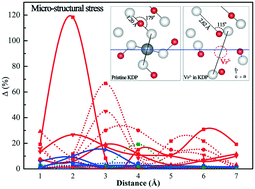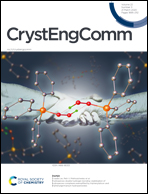Structural stress and extra optical absorption induced by the intrinsic cation defects in KDP and ADP crystals: a theoretical study
Abstract
Intrinsic point defects are regarded as one of the dominant factors that can induce initial structural breakdown under laser irradiation and reduce the laser damage thresholds of potassium dihydrogen phosphate (KDP) and its analog ammonium dihydrogen phosphate (ADP) crystals. In this work, we theoretically investigated the structural stress and extra optical absorption induced by the cation defects (Hi, VP, VK, and VN) in both crystals. VP5− is identified as one of the main defects that can contribute to the reduced laser damage threshold of KDP. It can collapse the PO43− skeletal structure of KDP and introduce extra optical absorption at 310–620 nm. The relatively higher laser damage threshold of ADP is attributed to the difficulties in forming VP defects in the crystal. The dominant cation defects Hi+ and VN3+ in ADP cause less local stress than VP5− in KDP and do not introduce any defect states and extra optical absorption that may reduce the optical damage threshold. These calculation results agree well with the experiments. It is therefore suggested to control the VP concentration during the KDP crystal growth and treatment to effectively enhance its resistance to laser irradiation.



 Please wait while we load your content...
Please wait while we load your content...